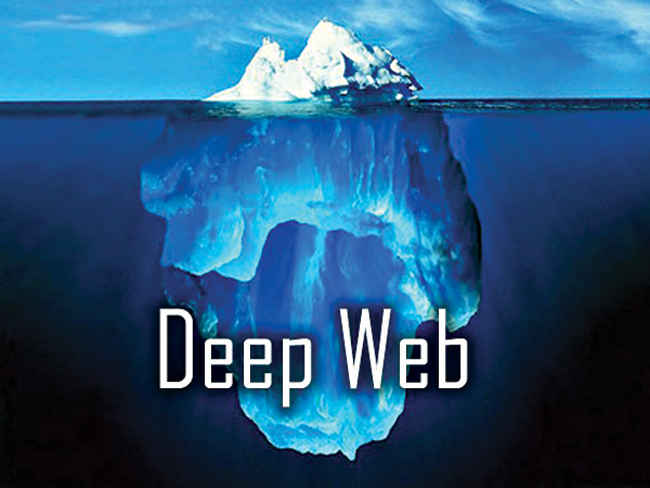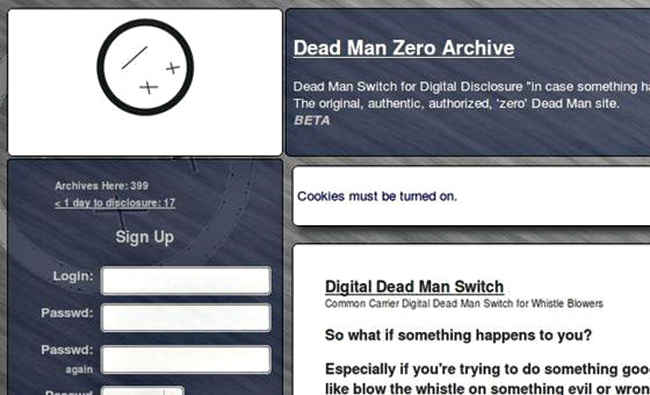How whistleblowers use the darknet for good
The deep web fosters anonymity and privacy. Here we look at how it works.

There is little doubt that whistle blowers have had a significant impact on politics, economy and business. People like Edward Snowden and Julian Assange have demonstrated how whistle-blowers can change public opinion and hold governments to account for their shenanigans and wrong doings. But the rockstar aura that has been bestowed on some whistle blowers should not blind us to the risks that they have taken to bring sensitive and secret information to light. That’s because whistleblowing involves pointing fingers at someone or some organization that’s powerful. Whistleblowers are a breed apart, and they are often the source for shocking exposes that open the world’s eyes to a hitherto unknown facet about a renowned individual, a company or a nation. And the repercussions for whistleblowers could be dire – from being maligned and sued, to being jailed or physically eliminated. After all, you can scarcely expect the powerful to sit by idly when hitherto secret information is revealed to the world.
 Survey
SurveyThankfully, technology is helping many modern whistleblowers to publish their stories without revealing their identity. Even sites like Wikileaks wouldn’t exist without secret networks that exist beneath the public Internet. And these hidden or underground networks, collectively called the Deep Web or Darknet, owe their existence to services like TOR that provide a secure communication environment and ensure user anonymity.
Probably not what a whistle blower looks like
One example of service that helps whistleblowers is Dead Man Zero. This site gives whistleblowers the option to have their information automatically published if they get kidnapped, jailed, injured or worse. The site is accessed using the Tor browser, and all you need to do is to upload your sensitive files into a cloud storage service. The files can be encrypted with a password, and you can also include a description of your content. The site then adds its own encryption to the files, making them extra-secure. Afterwards, you get a unique URL using which you can log in. While uploading the files, you can specify a time period (once every day, once a week or once every month). If you do not log into the site within that time period, your files will automatically be sent to a list of email addresses that you have provided in advance—allowing you to disseminate the information.
The Deep Web
You may be astonished to know that there is a vast amount of information that is not “indexed” and served up in search results by popular search engines like Google, Bing or Yahoo. These sources collectively comprise the Deep Web, and can include all kinds of places—from academic databases to private websites and corporate portals. Very often these sources are hidden from search engines for reasons of privacy and security. It is estimated by researchers that the Deep Web is so large that that less than 1 percent is accessible using traditional search engines since the content is stored in file formats that search engines cannot generally deal with, or can be accessed only by dynamic database queries.
Darknets, on the other hand, are specific private niches in the Deep Web that are intended to for access by trusted users. They usually require highly specialized software or tools that enable access, decode the encrypted formats, and ensure user anonymity.
| Getting Into the Darknet |
|---|
| To access the Darknet you need special software and services. Here are some you can use: |
| TOR Browser Initially developed by the US Navy as a global network of servers, TOR (short for The Onion Router) helps you browse the internet without revealing your identity. The browser keeps switching your traffic through a relay network so that it’s hard to pin down your location. |
| I2P Browser Allowing you to set up peer-to-peer connection in anonymous mode, the I2P is promoted as an alternative to TOR. It employs P2P software called the I2P layer, and this browser is meant for communicating secrets. |
| TailsOS The Amnesic Incognito Live System (Tails) is a Linux distribution and a TOR operating system that aims to provide more stringent user anonymity. Tails can be booted from a USB drive, or a DVD, and does not leave any traces on your machine. |
| Orbot A tool for Android smartphones that provides anonymity routing traffic from the web browser through the TOR network. |
| Tox Tox is a free and open-source, peer-to-peer, encrypted instant messaging and video calling software. Using Tox you can message friends, join chat rooms, voice and video chat, and send each other files in a secure manner. All traffic over Tox is encrypted end-to-end. |
| IprediaOS Another OS based on the Linux platform, Ipredia offers a secure environment for users who want to use the Net anonymously. The traffic is automatically encrypted, and the OS provides a wide variety of applications for chatting, peer-to-peer communications, mail and file transfers. |
The web that we know is probably just the tip of the iceberg
Getting Inside the Darknet
Making your way into the Darknet is virtually impossible, unless you have the right tools and use the proper techniques. But once you have them, you can use many directory sites and wikis that have been created to keep track of hidden services. For instance, to access Onionland, you need to install special software, and take some safety precautions.
Once you access Onionland, you will see that it looks much like a directory listing. Hidden services turn up and vanish, often within days—and new entries crop up periodically. And it’s not uncommon for the directory itself to shift URLs so that for tracking the locations, you will have to rely on Onionland itself.
Most of the directory entries you will find in Onionland make it amply clear what lies beneath. For this is the market place for weapons dealers, credit-card scammers, document and currency forgers, pornography –and plenty of other stuff you wouldn’t feel comfortable discussing with your mother. Be warned that Onionland also has its own share of scams—all designed to make you part with your hard-earned money. Onionland, with its perennially shifting links and directory entries, is characteristic of how many Darknets function.
| A Saner Side of Darknet |
|---|
|
In an increasingly connected world, privacy is becoming a major concern. Virtually all content that you create or share online is amenable to the prying eyes of ad networks, government organizations, and spy agencies. Needless to say, this scenario makes many web-users uncomfortable. Indeed, there are many who are seeking an alternative version of the Internet that is inaccessible to scanners. And the curious part is that these users do not want a private version of the Net for nefarious or illegal activities. Hyperboria, the brain-child of programmer Caleb James, is is a highly-encrypted network of people connected to each other in a peer-to-peer mode. The cryptographic technology has been designed with the assistance of several mathematicians, and claimed to be virtually unbreakable. But the catch But that’s not to say that Hyperboria isn’t a happening place. Aside from The Twitter like Social-node, Hyperboria is also rich with such things as Uppit–a Reddit powered voting/sharing service. |
Probably what a whistle blower looks like
Deep Web is more of a Temporary Haven
It’s alarming to think that so many products and services that we rely on are controlled by a few powerful organizations, including the government. The common man has put quite a lot of trust in these organizations. Unfortunately, these mammoth entities exert a high level of control over most mainstream media. So, when a malpractice arises, it is more than likely that it will go unreported. This volatile situation has made whistleblowers extremely crucial for the world at large—and has rendered them highly vulnerable to punitive action.
While whistleblowers have found a way to protect themselves by making use of the Deep Web and other anonymity-providing services, in the long run it is not feasible to rely solely on the Deep Web for protection. Given the rate of evolution of technology, surveillance agencies will eventually breach them. What we need are stringent rules and laws to protect those who risk everything to divulge a significant piece of information—and strong enforcement. New initiatives like the Whistleblowing International Network (collective of NGOs for whistleblowers) that strives for better protection for the secret-breakers need to be encouraged and supported.
Dead man zero: The Whistleblower’s insurance policy
| Is there a Hidden Deep Web? |
|---|
| Now that the Deep Web has surfaced in public discussions, the biggest question is how many levels does the Internet have? Well, if you have to get at the truth, then you need to dig deep. And here is what experts have found: |
| A. Layer 1: This is the one we are all familiar with, and use everyday. The links are decisively Internet-facing and access is easily possible with popular browsers. |
| B. Layer 2: Below the primary layer a multitude of Internet-facing links exist, though they are unlisted. The major mode of accessing these links is through enforced anonymity. |
| C. Layer 3: This is huge agglomeration of links that aren’t Internet-facing. Most of the content in this layer isn’t accessible to the casual user, and access methods include using physical networked devices or specialized software. |
| D. Layer 4: This layer involves smaller networks, none of which is Internet-facing. Usually, the highly protected content of this layer can only be accessed via security flaws. |
| Depending on who you ask, the number of layers and the contents thereof could vary. But, It has often been speculated that that there are hidden areas within the DeepWeb that are accessible only to a select few. |
| 1. Marianas Web While there is no proof, belief has it that the Marianas Web is a repository of all secrets that humans have pondered about for long time—including the actual location of the lost city of Atlantis and the Vatican secret archives. But that’s not all. Some conspiracy theorists claim that the Marianas Web is an AI (Artificial Intelligence) that has become sentient, and now controls the whole Internet. According to the proponents of this view, you need quantum computers to access Marianas Web. |
| 2. Freenet Unlike Marianas Web, Freenet isn’t a myth. It’s a platform that allows you to communicate anonymously. Aimed at aiding those who wish to beat surveillance and use the internet for publishing information without revealing their identity, Freenet has been around for about 15 years and is quite popular among whistleblowers. But a few allege that Freenet helps you gain access to the darker parts of the web, and dabble in shady activities in complete anonymity. |



